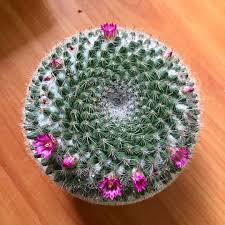Chinese Aristocratic Families and the Development of Religious Rituals

China, with its long and rich cultural history, has seen the intertwining of aristocratic families and religious practices for millennia. The interplay between powerful family clans and religious rituals is a testament to the deep connection between governance, culture, and spirituality in Chinese society. Aristocratic families, which held both political and social power, played a significant role in shaping the development of religious ceremonies, beliefs, and practices that still resonate today.
Religious rituals in China have evolved from ancient times, blending indigenous practices with imported religions such as Buddhism, Taoism, and Confucianism. These rituals served not only to appease the divine but also as a method of consolidating power, maintaining family honor, and influencing the spiritual and political landscape. Aristocratic families, who often held control over vast lands and wealth, were key patrons and enforcers of these rituals. Their influence shaped the religious practices of the empire, creating a legacy of spiritual devotion that contributed to the development of Chinese civilization.
1. The Influence of Aristocratic Families on Religious Rituals in Ancient China
Aristocratic families in ancient China, particularly during the Zhou (1046–256 BCE) and Han (206 BCE–220 CE) dynasties, wielded immense power and influence over both the political and spiritual spheres. As families responsible for governance, they were not only the rulers of their domains but also custodians of religious and ancestral traditions.
A) Ancestral Worship and its Significance
The practice of ancestor worship is one of the oldest religious rituals in Chinese history. The aristocracy, with its focus on lineage and family honor, played a crucial role in the development and institutionalization of ancestral veneration. Ancestral worship involved making offerings and performing rituals to honor deceased relatives, ensuring their spirits were appeased and that the family continued to receive their blessings.
In ancient China, the most powerful families—those in the imperial court or among the nobility—were the ones who made the most elaborate offerings to their ancestors. These rituals were performed during important occasions, such as the Chinese New Year, important birthdays, or times of familial crisis. Aristocratic families built elaborate ancestral halls and temples, which became centers for these rituals. By conducting these ceremonies, the aristocrats believed they could maintain harmony and balance in their lives, ensuring prosperity for their households and, by extension, for the state.
B) The Role of Religious Clergy and Ritual Leaders
Aristocratic families relied on religious leaders and ritual experts to guide and perform these important ancestral ceremonies. In ancient China, ritual leaders—often Taoist priests, Buddhist monks, or Confucian scholars—had the sacred responsibility of ensuring that rites were carried out with precision and respect. These clergy were considered to be intermediaries between the divine and human realms, capable of invoking spiritual forces and maintaining cosmic harmony.
Aristocratic families, particularly during the Han dynasty, supported religious institutions and granted them resources in exchange for religious services. Monasteries, temples, and shrines, often built by or funded by aristocratic families, became central locations for conducting rituals. In some cases, aristocratic families would employ religious leaders as spiritual advisors, ensuring that they could perform rituals both for the family and the state. This relationship between the aristocracy and religious clergy laid the foundation for the development of religious ceremonies in Chinese society, particularly in connection with governance and state rituals.
2. Taoism and the Aristocracy’s Role in Ritual Practices
Taoism, one of the foundational spiritual practices of China, had a profound impact on the development of religious rituals, especially among the aristocracy. Taoism emphasized living in harmony with the Tao (the Way) and seeking immortality through spiritual cultivation and rituals. As the religion evolved, it became increasingly integrated into the Chinese political and aristocratic structures, with Taoist rituals and ceremonies being closely associated with imperial authority.
A) Taoist Ceremonies and the Court
During the Tang dynasty (618–907 CE), Taoism enjoyed imperial favor, and the court sponsored Taoist temples and monasteries. The ruling elite, including the imperial family, frequently turned to Taoist priests for rituals to ensure the prosperity and longevity of the empire. Taoist rituals, which often included offerings, prayers, and divination practices, were conducted to invoke divine protection for the emperor and the state.
The aristocracy’s patronage of Taoist rituals was not just for personal benefit but was also seen as a method of maintaining political stability and ensuring the health of the state. The role of Taoist priests in court ceremonies reflected the belief that spiritual and material well-being were interconnected. By performing Taoist rituals, aristocratic families and the emperor sought to align themselves with the natural world and the cosmic forces that governed life on earth.
B) The Taoist Influence on Family Rituals
Taoism also had a significant influence on family rituals, particularly in terms of health, longevity, and the afterlife. Aristocratic families often consulted Taoist priests to perform ceremonies to ensure the well-being of family members. For example, rituals for prolonging life were common, as Taoism placed great emphasis on achieving immortality through spiritual and physical practices.
Taoist priesthoods were often supported by aristocratic families, who sought to ensure that their lineage and household were spiritually protected. This protection was not limited to the physical realm but extended into the metaphysical, where Taoist rituals sought to safeguard families from negative influences, evil spirits, or bad fortune. By cultivating a relationship with Taoist clergy, aristocratic families could bolster their spiritual and physical well-being, creating a sense of divine favor that permeated both their daily lives and their legacy.
3. The Emergence of Buddhism and Its Influence on Aristocratic Rituals
Buddhism arrived in China from India during the Han dynasty, and over time, it became one of the most influential religious traditions in the country. Buddhist rituals, which centered on meditation, offerings, and prayers for the dead, resonated with the Chinese aristocracy, who saw Buddhism as a means of acquiring spiritual merit and achieving enlightenment.
A) Buddhist Monasteries and Aristocratic Patronage
Aristocratic families in China played a significant role in the spread of Buddhism by financially supporting Buddhist monasteries and temples. These monasteries became centers of spiritual life, scholarship, and artistic expression, and aristocratic families often sought to gain merit by making donations or endowing large Buddhist institutions.
These aristocratic patrons were believed to accumulate good karma, which, in turn, could ensure the spiritual elevation of both the individual and the family. The construction of Buddhist temples and the commissioning of Buddhist artwork were not just acts of religious devotion but also expressions of power and status. By contributing to the flourishing of Buddhism, aristocratic families further integrated the practice into their social fabric and political life.
B) Buddhist Ceremonies and Family Rituals
Just as Taoism influenced aristocratic family rituals, so did Buddhism. Buddhist monks were often called upon to perform rituals for the deceased, as well as prayers for the living. The belief in karma and reincarnation made Buddhism particularly appealing to aristocratic families, as it offered a spiritual framework for understanding the afterlife and the consequences of one’s actions.
Funeral rites were an important aspect of aristocratic Buddhist rituals. Buddhist monks would conduct elaborate ceremonies to ensure that the soul of the deceased would reach a favorable rebirth. These rituals were often expensive and required significant patronage, which further solidified the relationship between aristocratic families and religious institutions.
Buddhism also contributed to the development of ancestor worship. Aristocratic families incorporated Buddhist practices into their ancestor veneration, blending Buddhist prayers for the deceased with traditional rituals. This syncretism between Buddhism and traditional Chinese religious practices helped to establish a spiritual and cultural continuity that was embraced by the aristocracy.
4. Confucianism and its Influence on Religious Rituals
Although Confucianism is more of a philosophical system than a religion, its influence on religious rituals in China cannot be underestimated. Confucian values of filial piety, respect for elders, and the importance of family became integral to the religious rituals practiced by aristocratic families.
A) The Role of Confucian Rituals in Family Life
Confucianism placed great emphasis on the importance of family and social harmony, and aristocratic families often used Confucian rituals to maintain social order within their households. The rituals were often centered on honoring one’s ancestors and performing duties to ensure the stability of the family lineage.
Confucian scholars and officials often advised aristocratic families on the proper conduct of these rituals, emphasizing the importance of respect for tradition and the family unit. Confucian values, with their focus on morality, social hierarchy, and harmony, were reflected in the rituals and ceremonies that aristocratic families observed. These rituals served as a means of reinforcing family bonds, establishing social norms, and maintaining political stability.
5. Conclusion: The Enduring Legacy of Aristocratic Influence on Religious Rituals
The relationship between aristocratic families and religious rituals in China is a key chapter in the history of Chinese spirituality. From ancestor worship to Taoist, Buddhist, and Confucian practices, the aristocracy’s patronage and participation in religious rituals helped shape the spiritual landscape of the nation.
Aristocratic families played a pivotal role in the development of religious practices, ensuring that these rituals were carried out with the necessary reverence and authority. In return, they received spiritual guidance, blessings, and the assurance of divine favor, which helped maintain their political and social status. The legacy of these intertwined roles can still be seen today in the continued importance of religious rituals in Chinese culture, where the influence of aristocratic families on spiritual practices remains a profound force in shaping the religious landscape of modern China.

